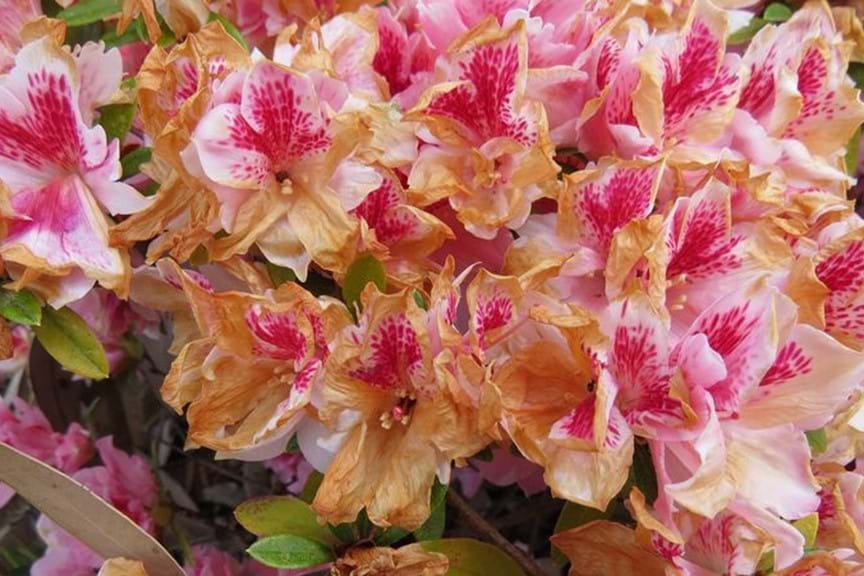Azalea Petal Blight Control in Your Garden
Ovulinia sp.

Ovulinia sp.

Spray Azaleas with Yates Mancozeb Plus Garden Fungicide & Miticide when buds are starting to form, thoroughly covering all plant surfaces including the undersides of leaves. It is especially important to spray prior to expected wet weather where disease conditions are favoured. Repeat every 10 days.
Petal blight is a fungal disease of flowers and is particularly well known for attacking azalea flowers. At the base of infected flowers, a fungus consisting of small hard-fruiting bodies called sclerotia form. The sclerotia fall to the ground and over winter and in the following season, develop fruiting bodies which shed spores to start the next cycle. The condition worsens in wet, cool weather during flowering. The spores of the disease can be spread by wind up to 20 km and so the disease moves from plant to plant in the garden. Petal Blight is more prevalent in varieties with double blooms. Once the disease has started on your plant, it is difficult to stop. Petal Blight has also been known to attack camellia flowers and roses.
The disease starts as pale marks on coloured petals and brown marks on white petals. The spots enlarge rapidly and by the end of the day, the whole flower has collapsed into a brown, mushy mess. Affected flowers may hang on the bush.
The best defence is to remove all damaged flowers as soon as possible so the fungal spores do not spread throughout the garden. If you have had the disease in previous years then a preventative fungal spray is needed as soon as the buds begin to show colour on your bushes. Avoid overhead watering during flowering.